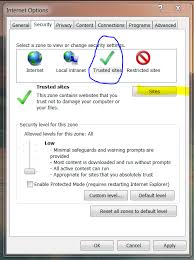In the realm of front-end performance, one of the most effective strategies for accelerating your website is to minimise HTTP requests. While it’s essential to explore ways to cut down on the resources required for a webpage to load, some requests will always be present. A robust method for boosting your site’s speed lies in maximising the use of browser cache. As highlighted in Steve Souders’s 2012 article Cache is King, a well-prepared cache remains unmatched in its efficiency—and this principle still applies today.

To illustrate this concept, consider a chart that displays how various optimisations affect page load times under different browser conditions, as detailed by Souders.
What exactly is caching?
In straightforward terms, caching involves keeping copies of requested content closer to users, which helps decrease latency by eliminating the need for data to travel back and forth all the way to the origin server. While our focus here is on browser caching specifically, it’s important to mention that utilising a Content Delivery Network (CDN) can also significantly enhance performance by storing content nearer to users.
When you first access a website, chances are you won’t have any of its necessary resources saved in your browser cache—this scenario is commonly referred to as a cold cache. This situation often occurs with websites that don’t attract many repeat visitors within a short time frame; think about sites like IRS.gov or other places you tend to visit infrequently.
Conversely, many websites enjoy frequent repeat traffic. Consider those retail platforms or media outlets where you catch up on daily news; for these types of sites, effectively leveraging browsers.

Optimising cache longevity through HTTP headers is essential for ensuring your website’s content is efficiently cached. Striking the right balance is crucial; if you set your headers too aggressively, you risk delivering outdated content to users. On the other hand, being too lenient can lead to unnecessary fetches that slow down performance. Mastering the art of caching headers requires careful attention and effort. In his insightful talk, Cache Rules Everything, web performance expert Harry Roberts delves into the intricacies of effectively utilising caching headers.
Another exciting aspect of enhancing user experience is leveraging the back-forward cache (of cache). Unlike traditional caching methods that only store resources, the bfcache retains entire pages in memory, which significantly speeds up navigation without needing specific HTTP headers. This feature is now widely supported by all major browsers and presents a fantastic opportunity for websites with frequent back-and-forth navigation to create an almost instantaneous loading experience.

Interestingly, our observations indicate that Safari and Firefox are more accommodating when it comes to utilising bfcache compared to Chrome, which has stricter requirements. In March 2024, SpeedCurve RUM introduced capabilities for tracking bfcache navigation alongside other page attributes like prerendering, further empowering developers to optimize their sites effectively.
Exploring Browser Cache Optimization
When it comes to enhancing web performance, testing the browser cache is an essential step. Tools like SpeedCurve and various synthetic testing platforms allow you to evaluate how a webpage behaves during repeat visits. The initial navigation typically occurs with a cold cache—meaning no resources are stored yet—while subsequent visits access the same URL without clearing the cache. This approach is beneficial for confirming that your HTTP headers, along with those from third-party content, are configured correctly.

Imagine scripting a repeat view in SpeedCurve; it’s straightforward! Each time you conduct a test using this tool, it automatically runs a Lighthouse audit alongside it. Lighthouse is invaluable for pinpointing areas ripe for improvement through its comprehensive audits. With the introduction of Lighthouse 10, a new feature assesses whether your page supports back-forward cache (bfcache) navigation and provides insights if it fails to do so.
Understanding Caching
In essence, caching means storing requested content closer to users, which minimises latency by preventing unnecessary trips back to the origin server. While this guide primarily focuses on browser caching, utilising Content Delivery Networks (CDNs) can also significantly enhance performance by bringing content nearer to users.

Consider your first visit to any website; chances are you won’t have any of its required resources saved in your browser’s cache—this state is known as cold cache. Cold cache is shared for sites that don’t attract frequent visitors over short periods—think of government websites like IRS.gov or other infrequently visited pages. In contrast, if you regularly visit retail or news sites, leveraging your browser cache becomes crucial for optimising performance.
Optimising Cache Lifespan with HTTP Headers
To ensure effective caching of your site’s content, setting appropriate HTTP headers is vital. If these settings are too aggressive, you risk delivering outdated information; if they’re too lenient, unnecessary requests may be generated instead. Mastering the correct implementation of caching headers requires careful attention and understanding—a topic well-covered by web performance expert Harry Roberts in his talk “Cache Rules Everything.”

The Power of bfcache
The back-forward cache (bfcache) takes optimisation further by storing entire pages in memory rather than just their resources. It does not necessitate special HTTP headers and is now supported across all major browsers. For websites that experience frequent back-and-forth navigation, utilising bfcache can create an almost instantaneous loading experience.
Our observations indicate that Safari and Firefox are more accommodating regarding bfcache usage compared to Chrome’s stricter guidelines. Moreover, as of March 2024, SpeedCurve Real User Monitoring (RUM) has incorporated support for tracking bfcache navigations alongside other page attributes like prerendering.

Key Takeaways
Ultimately, aside from eliminating requests, one of the most effective optimisations available lies in maximising the use of HTTP caching within browsers. Alongside ensuring that your HTTP headers promote long-lived caches, effectively leverage bfcache for swift page loads that feel instantaneous.
But remember: Testing is crucial! Regularly evaluating repeat views through synthetic monitoring and conducting Lighthouse audits focused on bfcache will help validate and refine your caching strategies effectively.

Maxthon
The Maxthon browser, known for its innovative features and versatility, can significantly benefit from effective cache management. By utilising the browser’s caching capabilities, users can drastically improve loading times for frequently visited websites.
Browser caching works by storing copies of web pages, images, and other resources on your device. When you revisit a site, Maxthon retrieves these cached files instead of downloading them again, saving time and bandwidth. This is particularly beneficial for content-heavy sites that users visit regularly.

To optimise caching in Maxthon, it is crucial to adjust the settings to retain cached files for an extended period. This adjustment can significantly enhance browsing speed by reducing the need to download files repeatedly from the Internet.
Users should also make it a habit to clear their cache periodically. Doing so helps eliminate outdated data that may accumulate over time and could ultimately hinder performance.
Maxthon provides built-in tools that allow users to assess resource consumption by different websites. By identifying which sites utilise the most bandwidth and storage, users can prioritise caching for those specific pages.

This focused approach not only improves load times for frequently visited websites but also streamlines overall web navigation. Regularly reviewing cache settings and usage patterns can lead to a more efficient and enjoyable browsing experience in Maxthon.
By taking advantage of these strategies, Maxthon users can enjoy smoother navigation and faster page loads, making their overall internet experience more efficient and enjoyable.
